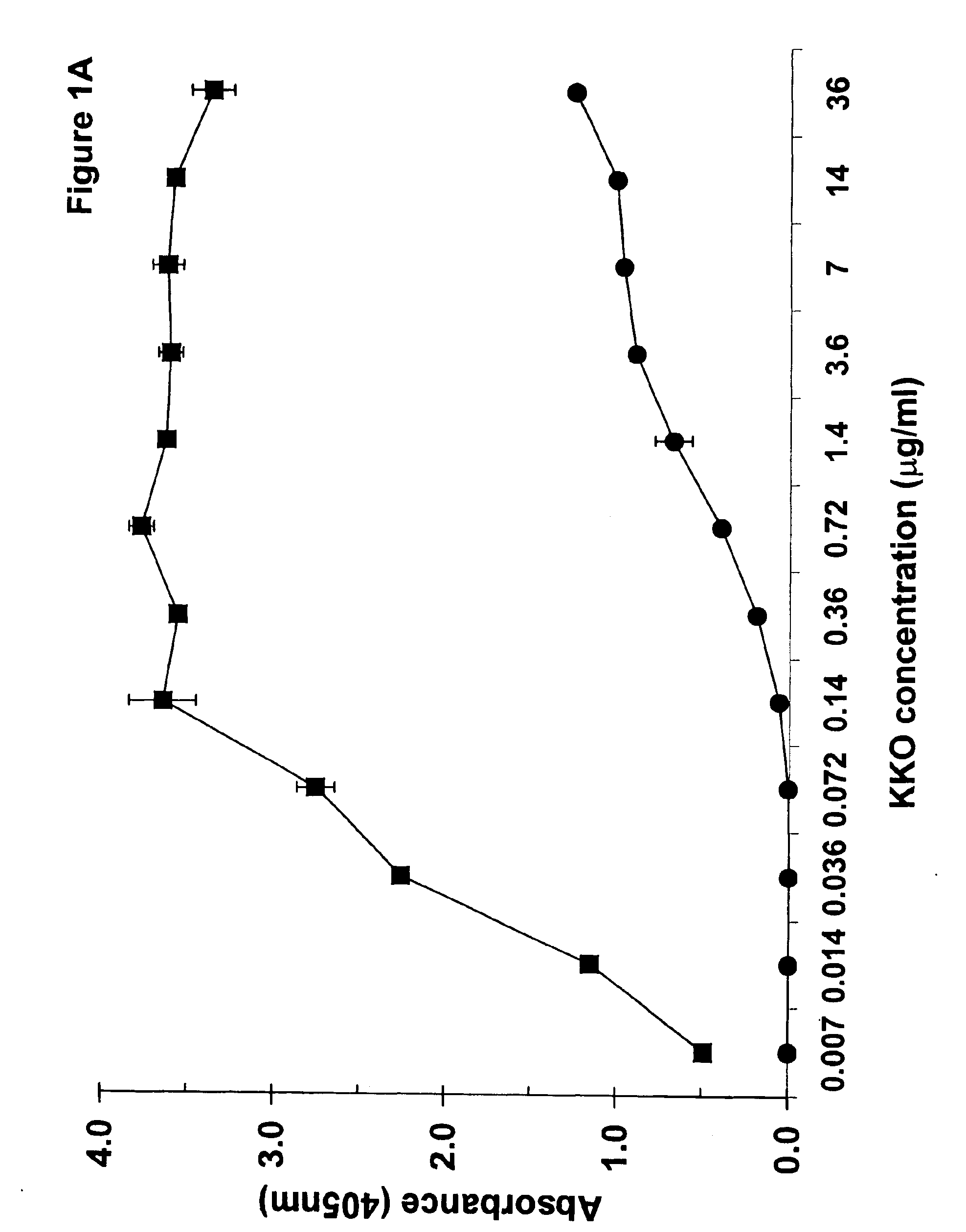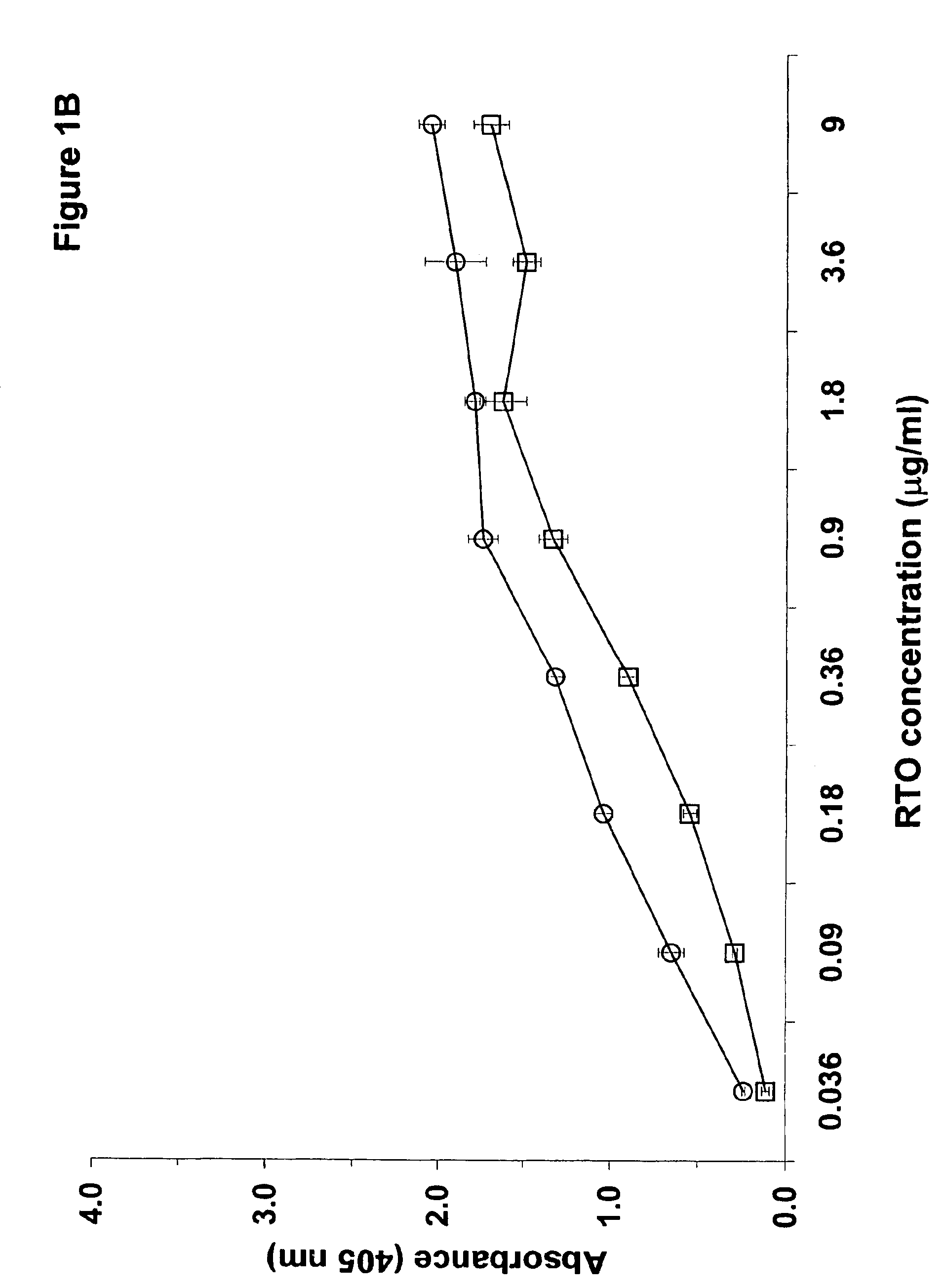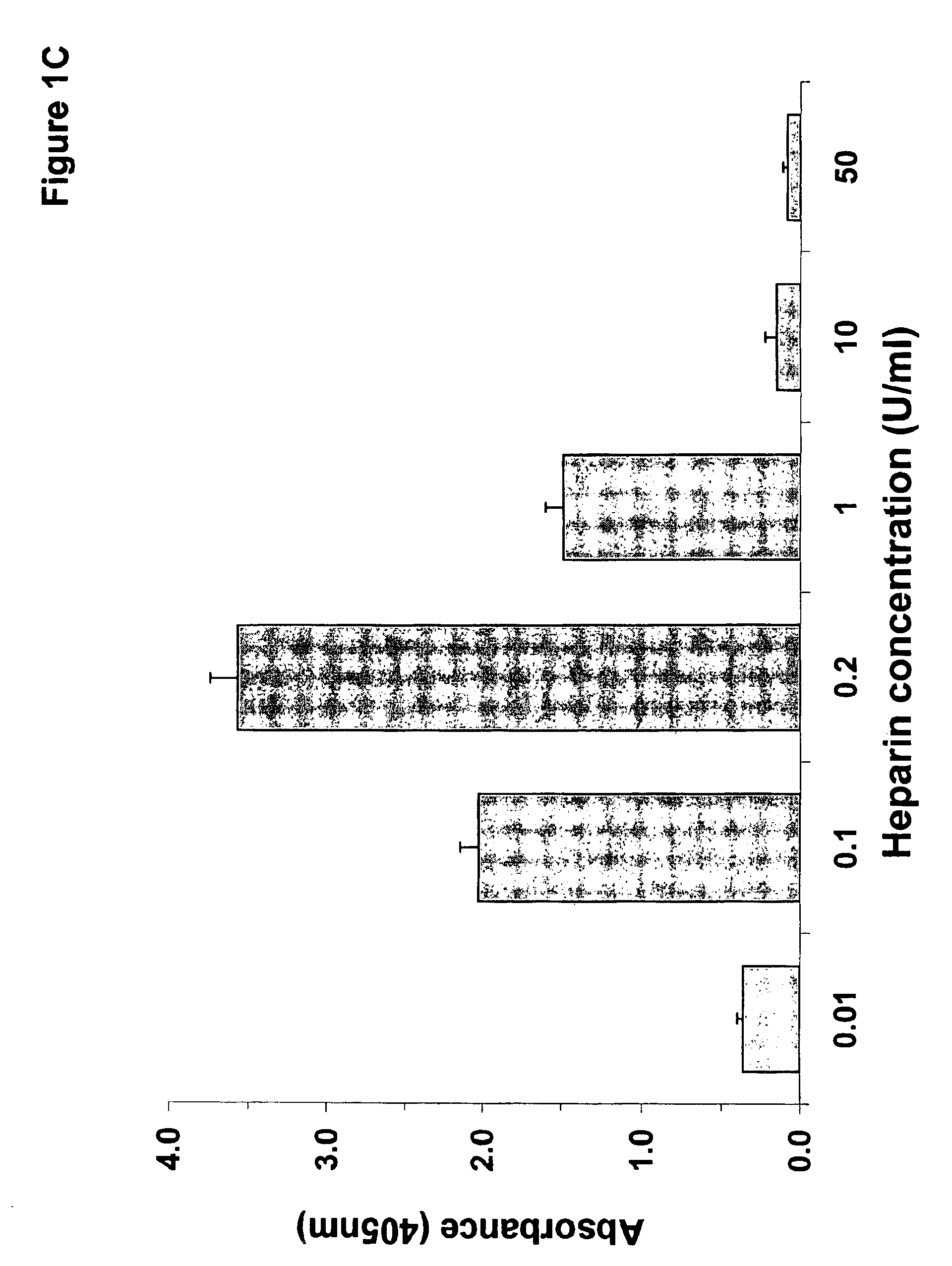Compositions and methods useful for the diagnosis and treatment of heparin induced thrombocytopenia/thrombosis
a thrombocytopenia and thrombosis technology, applied in the field of compositions and methods useful for the diagnosis and treatment of heparin-induced thrombocytopenia/thrombosis, can solve the problems of unambiguous segregation of asymptomatic and serologic or clinical differences, difficult to establish the molecular basis of a pathogenic role of antibodies to the pf4/heparin complex, and the inability to determine the immune respons
- Summary
- Abstract
- Description
- Claims
- Application Information
AI Technical Summary
Benefits of technology
Problems solved by technology
Method used
Image
Examples
example 1
[0204]The experiments discussed in this Example describe the preparation and characterization of a murine monoclonal antibody of the -invention termed “KKO”. The materials and methods used in the experiments of this Example are now described.
Materials
[0205]The murine myeloma cell line P3X63Ag8U.1 (P3U1) was purchased from American Type Tissue Culture Collection (Rockville, Md.). Tissue culture reagents were from Gibco BRL (Rockville, Md.). Fetal bovine serum was from Hyclone (Logan, Utah). Heparin solutions used in these studies were from Elkins-Sinn (Cherry Hill, N.J.). Reagents purchased from Amersham Pharmacia Biotech (Piscataway, N.J.) included: ECL™ chemiluminescence detection kit, Hi Trap affinity columns, ProRPC® 15 micron HR 10 / 10 chromatography column, 5-hydroxy [side chain-2-14C] tryptamine creatine sulfate and the Sequenase T7 DNA polymerase kit.
[0206]Immunochemicals used in the studies described below include: anti-PF4, anti-NAP-2 and anti-IL-8 raised in rabbits from Pre...
example 2
[0236]The experiments described in this Example provide evidence that KKO, a murine monoclonal antibody of the invention, induces the secretion of IL-8 by monocytes in the presence of PF4, but not in the presence of heparin alone or a PF4 / heparin complex. The cytokine IL-8 is often used as a surrogate marker for activated monocytes and monocyte-like cells.
[0237]Using the monocytic cell line U937, various treatments with stimulants were tested in the cells (no stimulant, TNF-alpha, KKO, an isotype control antibody TRA-2b, sera from a patient with HIT, and sera from a control patient) in the presence of either PF4 (10 micrograms per milliliter), heparin (1 Unit per milliliter) or the PF4 / heparin complex (10 micrograms per milliliter and 1 Unit per milliliter, respectively). The cells were cultured for 24 hours with the various stimulants, and the secretion of IL-8 was measured using a commercially available assay (R&D Systems, Minneapolis, Minn.).
[0238]As depicted in FIG. 8, a signifi...
PUM
| Property | Measurement | Unit |
|---|---|---|
| concentration | aaaaa | aaaaa |
| concentrations | aaaaa | aaaaa |
| w/w | aaaaa | aaaaa |
Abstract
Description
Claims
Application Information
 Login to View More
Login to View More - R&D
- Intellectual Property
- Life Sciences
- Materials
- Tech Scout
- Unparalleled Data Quality
- Higher Quality Content
- 60% Fewer Hallucinations
Browse by: Latest US Patents, China's latest patents, Technical Efficacy Thesaurus, Application Domain, Technology Topic, Popular Technical Reports.
© 2025 PatSnap. All rights reserved.Legal|Privacy policy|Modern Slavery Act Transparency Statement|Sitemap|About US| Contact US: help@patsnap.com



